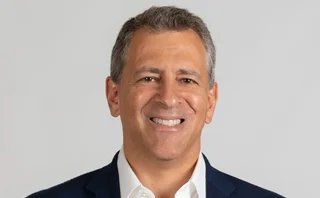
Data & Analytics House of the Year, Asia: OilX
Energy Risk Asia Awards 2020: Oil data platform grows customers and attracts investors with satellite data, marine intelligence and analytics

For oil producers and traders, the past 12 months have brought extreme price volatility and huge logistical disruption. This has made data collection and analysis even more critical in order to gain better insight into real-time global supply and demand shifts and tanker movements.
However, to obtain all the data required usually involves having several different subscriptions to data providers, and even then some of the traditional sources of fundamental data have a time lag of up to three months. Step forward OilX, a web-based platform launched in 2018 that combines conventional oil statistics with real-time data from satellites and marine intelligence and includes machine learning algorithms that can produce advanced analytics.
“We started OilX out of necessity,” explains chief executive and co-founder Florian Thaler, whose previous employers include Shell, Citigroup and New York-based hedge fund Och-Ziff. It was on joining the world of hedge funds that Thaler had his “eye-opening moment”, seeing how sophisticated the modelling and analysis was but without access to certain data readily available to firms that operate in the market. “At a physical oil trading firm, it’s the opposite, as the trading firm has the data but not necessarily the sophisticated methods of analysis,” he says.
OilX was developed to bring the tools of a modern hedge fund – the coding that allows sophisticated modelling and analysis – together with the know-how of an analyst at an oil major and investment bank, creating what Thaler calls a “digital oil analyst”.
By using OilX to automate many of the tasks performed by an oil analyst, Thaler believes firms can free up staff to spend more time on things that will give their companies a proprietary edge. “We automate a lot of the menial tasks that a junior oil analyst usually has to do, like gathering and cleaning cargo tracking data and monitoring inventory levels,” he says. “Up to 80% of an analyst’s time is spent on these tedious activities, leaving very little time for actual analysis and producing trading strategies.”
One of the platform’s biggest stand-outs is its provision of satellite data, the result of its partnership with the European Space Agency (ESA). Through this arrangement, OilX is able to access data from ESA’s Earth observation satellites as they circle the planet. These provide valuable, almost real-time information on global oil flows. For example, the amount of oil contained in storage tanks can be seen from space and measured using the satellites’ synthetic aperture radar instruments, which detect the rise and fall in the height of the lids of the tanks. This allows you to detect the changes in flow and supply-demand balances.
Through its co-operation with shipping technology company Signal Ocean, OilX also picks up the signals from automatic identification systems carried aboard oil tankers, enabling accurate tracking of oil being transported by sea.
The platform has seen rapid adoption this year, and now counts among its customers some of the largest trading houses, investment banks and hedge funds as well as oil majors and energy ministries in the Middle East.
It has had particular success in Asia, where, historically it has been harder to obtain some of the most useful supply and demand data, often because it is owned by national oil companies or government ministries, which are traditionally slow to release it.
“Companies in Asia have tended to suffer from an asymmetry of information compared to those in Europe or the US, but their receptiveness to digitise their analytics means they have a good chance of catching up and even leapfrogging the analytics capabilities of companies in other regions,” Thaler believes.
An important milestone for the company this year was securing $2.2 million in seed funding from companies including Korean oil refiner GS Caltex and Citi. This will allow OilX to extend its coverage beyond crude oil to refined products. “This was a significant development for us and shows the value these important firms place on what OilX is doing,” says Thaler.
Only users who have a paid subscription or are part of a corporate subscription are able to print or copy content.
To access these options, along with all other subscription benefits, please contact info@risk.net or view our subscription options here: http://subscriptions.risk.net/subscribe
You are currently unable to print this content. Please contact info@risk.net to find out more.
You are currently unable to copy this content. Please contact info@risk.net to find out more.
Copyright Infopro Digital Limited. All rights reserved.
As outlined in our terms and conditions, https://www.infopro-digital.com/terms-and-conditions/subscriptions/ (point 2.4), printing is limited to a single copy.
If you would like to purchase additional rights please email info@risk.net
Copyright Infopro Digital Limited. All rights reserved.
You may share this content using our article tools. As outlined in our terms and conditions, https://www.infopro-digital.com/terms-and-conditions/subscriptions/ (clause 2.4), an Authorised User may only make one copy of the materials for their own personal use. You must also comply with the restrictions in clause 2.5.
If you would like to purchase additional rights please email info@risk.net
More on Commodities
Energy Risk Asia Awards 2025: The winners
Winning firms showcase the value of prudent risk management amid challenging market conditions
Data and analytics firm of the year: LSEG Data & Analytics
Energy Risk Awards 2025: Firm’s vast datasets and unique analytics deliver actionable insights into energy transition trends
OTC trading platform of the year: AEGIS Markets
Energy Risk Awards 2025: Hedging platform enhances offering to support traders and dealers in unpredictable times
Electricity house of the year: Natixis CIB
Energy Risk Awards 2025: Bank launches raft of innovative deals across entire electricity supply chain
Voluntary carbon markets house of the year: SCB Environmental Markets
Energy Risk Awards 2025: Environmental specialist amplifies its commitment to the VCM
Sustainable fuels house of the year: Anew Climate
Energy Risk awards 2025: Environmental firm guides clients through regulatory flux
Weather house of the year: Parameter Climate
Energy Risk Awards 2025: Advisory firm takes unique approach to scale weather derivatives markets
Hedging advisory firm of the year: AEGIS Hedging
Energy Risk Awards 2025: Advisory firm’s advanced tech offers clients enhanced clarity in volatile times








